We kindly inform you that, as long as the subject affiliation of our 300.000+ articles is in progress, you might get unsufficient or no results on your third level or second level search. In this case, please broaden your search criteria.
This paper targets an analysis of the role the literate education played in the social ascension of a certain Transylvanian chancery scribe, namely Ştefan Raţ (cca.1660-1720). He turned from copyist in the princely chancery to administrator of an estate, and in the end to a member of the nobility. This social evolution was supported by his literate education, by the skills he acquired in the school and during the time he worked for the administration of the fiscal estates of Alba Iulia and Zlatna. He also developed and made a very good use of his high sense of establishing relations of political and religious nature. Everything was rounded out by his natural diplomatic skills, which brought him the supreme accomplishment, his social elevation into the noble class.
More...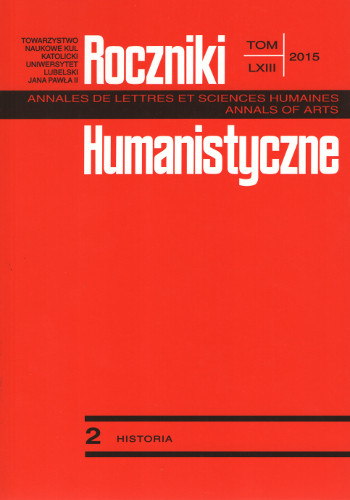
The article is aimed at portraying defeats in the light of sources from the Gniezno Archdeaconry residents of eastern Greater Poland experienced which in the 17th century. They were it among others: epidemics, fires, abnormal weather conditions, war with Swedes from 1655-1660 years - presence of all sorts armies what meant the entire set of such disasters as death, robbery, damage, epidemic. Also a bad management and overloads of the population could be a misfortune. These defeats caused determined demographic, social and economic effects. Disasters could have a different reach, a duration and a scale.The "Swedish invasion of Poland in 1655-1660" constitutes the dividing line dividing the 17th century into the just any half and second for the discussed area, when happened badly. Many factors made it up, and basic defeats had including their considerable participation. It is possible to notice their presence in contents and the form of types chosen for the purposes of the article of sources above all of church provenance, but also and secular.
More...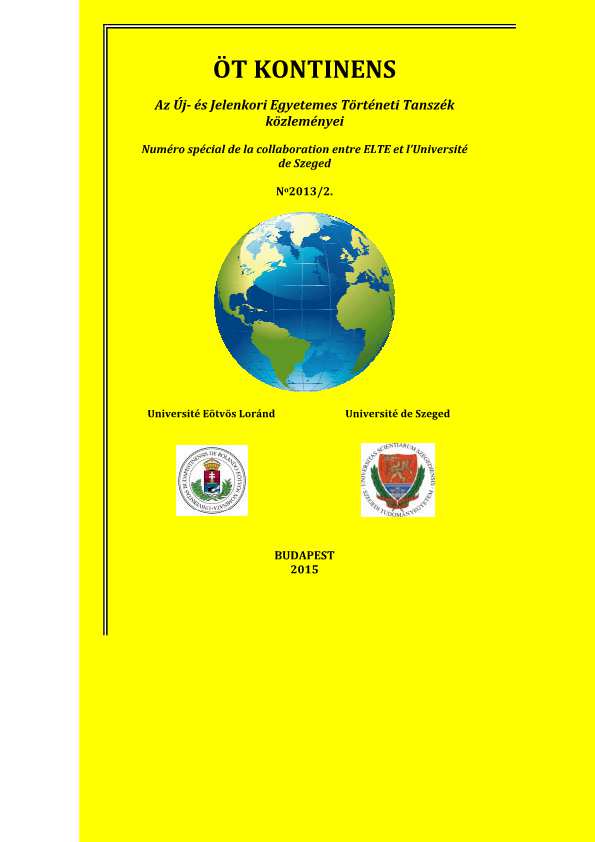
Marrying off his sister, Catherine to Gábor Bethlen, prince of Transylvania, in 1626 entailed a lot of risks for Georg Wilhelm, elector of Brandenburg. Contrary to the expectations, the reactions of the emperor were quite mild – in sharp contrast to those of Sigismund III, king of Poland, who went as far as to threaten the elector with depriving him of his fief, the Duchy of Prussia because of this decision. The paper argues that neither Bethlen's generosity in financial questions related to the marriage, nor the envisaged cooperation for the Protestant cause could have been strong enough arguments for Georg Wilhelm to take such a risk. However, there are some signs that point to a possible explanation: that Bethlen's envoys in the early autumn of 1625 secretly promised the Brandenburg court that Catherine would be elected as the prince's successor (which did happen later, in June 1626). But the high price the prince paid for his fiancée did not pay off: the military collapse of Brandenburg in 1626-1627 made any political cooperation impossible and there is little evidence that the prestige of Bethlen raised significantly thanks to his new consort. On the other hand, the election of Catherine created strong tension in Transylvanian politics and led to a short period of turmoil bordering on a civil war after Bethlen's death in 1629-1630. Thus, this marriage can be considered Gábor Bethlen's greatest political mistake: the substantial investments brought in negative results only.
More...
To compensate for the lack of mobility of the imperial army during the Thirty Years War, imperial generals hired Cossack light horsemen, who were tasked with neutralizing the Hajduk, who employed similar tactics. But the Cossacks proved to be less effective because – as opposed to the Hajduk – they were fighting on foreign land, for a foreign ruler and a foreign religion, which substantially limited their military performance and reliability. As waging open battles were not among their strengths, the presence of the Cossacks on the Habsburg side was actually more important psychologically, but with their independent operations and frequent disobedience to orders they caused a lot of trouble to Ferdinand II. Primarily this is what explains why the emperor was quick to urge their dissolution once serious danger was over. But it must be noted that ultimately it was the foreign conflicts of 1619–1920, the defeat of the Bohemians at White Mountain, the Sultan's fiasco against the Rzeczpospolita at Chocim in 1620 and the counterattack of Ferdinand II, that forced the Transylvanian prince to a compromise. In all these events the Cossacks played a decisive role. After the pacification of the Bohemian and Moravian territories, the Cossacks became an uncomfortable burden for the Emperor, so they were quickly dismissed. This way, ultimately it was the absence of the Cossack auxiliary troops that forced the imperial government to sign the Treaty of Nikolsburg with Gábor Bethlen.
More...
Tusor Péter (szerk.): „Írom kegyelmednek, mint igaz magyar igaz magyarnak…” Lippay György veszprémi és egri püspök, esztergomi érsek levelei magyar arisztokratákhoz, nemesekhez. Bibliothaca Historiae Ecclesiasticae Universitatis Catholicae de Petro Pázmány Nuncupatae. Collectanea studiorum et textuum. Series II. Classis I. Vol. 1. Budapest, 2015. 541 oldal
More...
Philippe Roy – Ferenc Tóth: La défaite ottomane: le début de la reconquête hongroise : 1683. Paris, Economica, impr. 2014, cop. 2014. 125 oldal
More...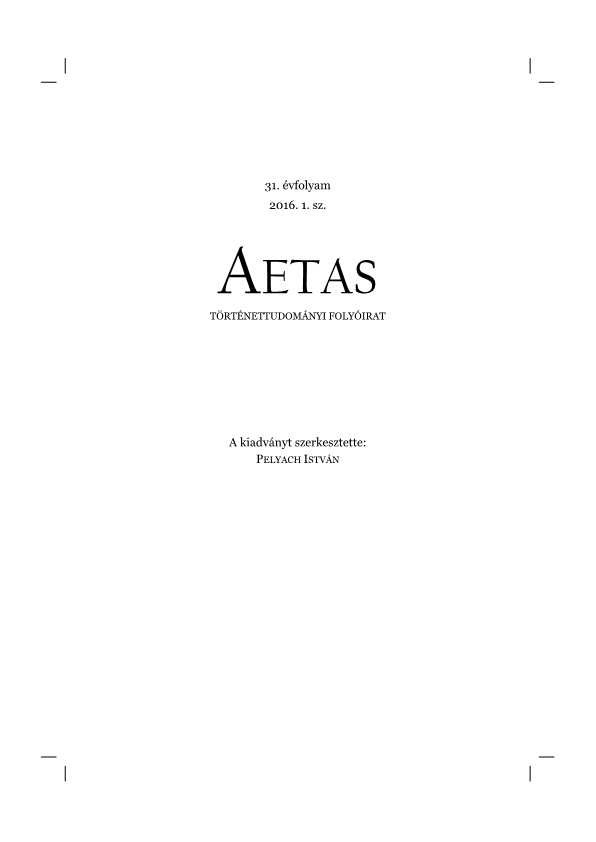
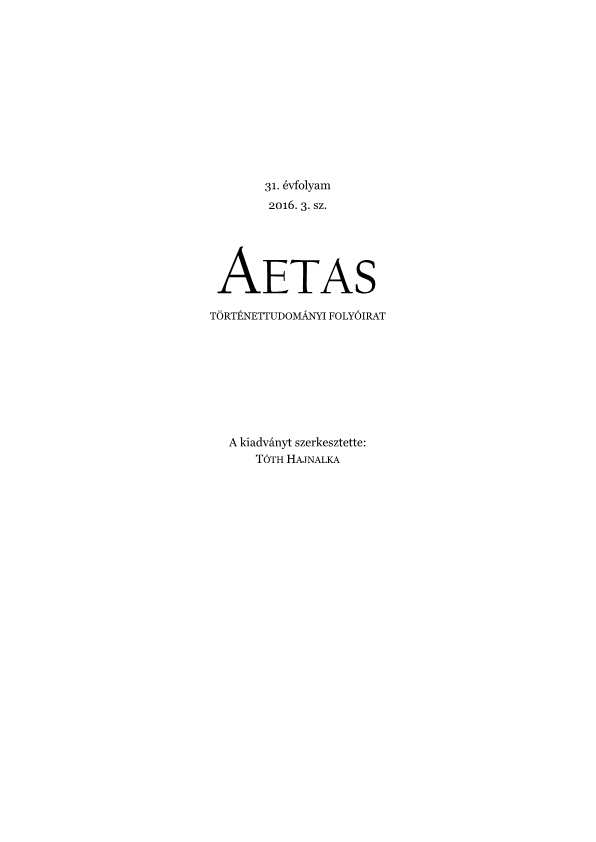
While I was conducting research on the circumstances of Simon Reniger’s appointment as Habsburg ambassador to Constantinople, a crime started to excite my interest. The offence had been committed during the term of the previous resident ambassador, Alexander Greiffenklau but it caused a lot of difficulties even at the time when Reniger came into office. Namely, in the autumn of 1646, Greiffenklau killed a certain Don Juan de Menesses, an adventurer of dubious origin, who – according to Habsburg informants – had been involved in conspiring against the dynasty within the Sultan’s entourage. In my paper, I want to describe what led to Menesses’ murder and what kind of consequences can be drawn on the basis of the crime as to the diplomatic cooperation between the Spanish and the Austrian lines of the Habsburg dynasty in the last years of the Thirty Years’ War.
More...
The paper focuses on the Ottoman social network of a Habsburg ambassador, Simon Reniger, who lived in Constantinople in the middle of the 17th century. The ambassador’s connections can be broken down into different groups based on the nature of the connection. The fact that, apart from the members of the uppermost circles, those belonging to the middle and lower classes are not mentioned in contemporary historical works, only in Ottoman, German or Hungarian archival sources, makes the research and the identification of persons difficult. As the case studies presented show, including one about the life of an Ottoman envoy who lived in Vienna as well, how difficult it is to discover the identity of Ottoman officials. But all things considered we can claim that Simon Reniger surrounded himself with an Ottoman social network which mostly comprised Hungarian renegades
More...
The paper is an attempt to highlight the most important facets of the extraordinarily long career of Zülfikar aga, a Hungarian renegade who was serving the Sublime Porte as a court interpreter for more than fifty years in the seventeenth century. Born around 1578, Zülfikar's first translation activities are documented from the peace negotiations at Zsitvatorok (1606) and he seems to have been living in Constantinople from 1608 on continuously, with the exception of some shorter diplomatic journeys until the early 1630s. He is first mentioned as grand dragoman in 1629, a post he held (in spite of not mastering any other language than Hungarian and Ottoman Turkish) until 1657. As the translator of all letters coming from beyond the northwestern borders of the Ottoman Empire, but also as a trusted counselor to successive grand viziers, he was an influential player of politics at the Sublime Porte – an influence he was ready to bring to the market. The most important strings connected him to the Transylvanian embassy (from where he received regular salary), but he also mediated the interests of the voivodes of Wallachia and Moldavia, as well as the governors of the empire’s border provinces for payment. Another source of income was his job as an information broker: in exchange for rewards, from the 1640s on he regularly informed the Habsburg embassy about any important news he had read in the incoming correspondence; and from the 1650s we have evidence of similar services to Muscovy (with the mediation of Constantinople Greeks). The last section of the study is a discussion whether Metin Kunt’s thesis about an ethnic solidarity in the Ottoman elite can be applied to the case of Zülfikar. It was beyond doubt the Transylvanian contacts that were the most useful for the dragoman when building his career. Nevertheless, the multiple loyalties he had during his long career and especially his dubious activities in cases of political crisis suggest that the dragoman was motivated by pragmatic reasons rather than ethnic solidarity–something he was ready to give up when the situation changed. From the Transylvanian side, the diplomats emphasized in their letters a lack of solidarity with Zülfikar on an ethnic basis by never referring to him as Hungarian, but rather always highlighting his “Turkish nature”.
More...
During the Ottoman occupation, Buda played an important role in the communication between the Habsburg and the Ottoman empires. After the peace of Zsitvatorok in 1606, Vienna had the opportunity to build up the system of “secret correspondents”, with one of its major stations in Buda. In the middle of the 17th century, Alexander Fischer, a renegade interpreter born in Vienna, who could also speak Hungarian, occupied the post. As the chiaus of Hüseyn at the side of the reigning pashas of Buda, he had access to important information, for example, about the raids on the border castles. He wrote his reports to the Vienna court under the pseudonym Hans Caspar, dated from Tata. In the turbulent 1650s, the role of Hans Caspar became more valuable to the Habsburg intelligence service, moreover, we have evidence that he even provided information to the men of the Transylvanian princes, thanks to his knowledge of Hungarian. At the same time, he most probably shared the information he gained during his missions in Vienna and Győr with his official superior. By analysing what Hans Caspar did as a spy, we can claim that his activity does not completely fit the typology the literature has drawn up about the operation of the “secret correspondents”.
More...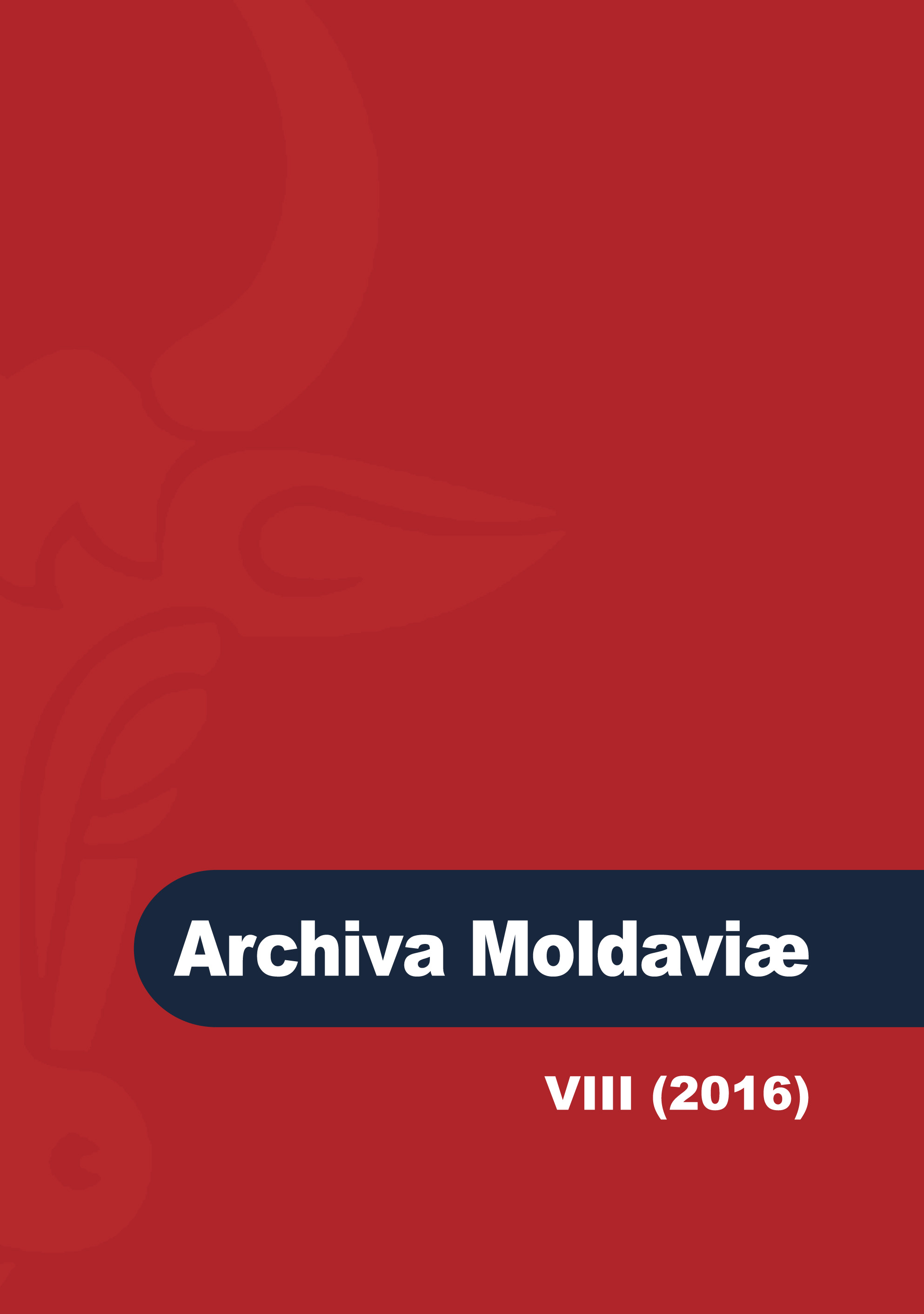
For confirmation of the Hotin peace treaty from 1621 with Ottoman Porte, Poles sent as a great ambassador Krzysztof Zbaraski. The text of the treaty was presented prejudicial to the interests of the Polish-Lithuanian Republic. Krzysztof Serebkowicz was Armenian and knew well how the Ottoman chancellery worked. He bribed the Ottoman secretaries to introduce in text provisions wanted by the Polish-Lithuanian Republic. Krzysztof Serebkowicz’s narration was known by a few small fragments published by I. Corfus, about Radu Mihnea nomination as ruler of Moldavia, and of his son, Alexander Cocon, as ruler of Țara Românească. I found it necessary to return to the text and to publish it completely, because the remaining fragments contain very important information about the history of the Romanian space.
More...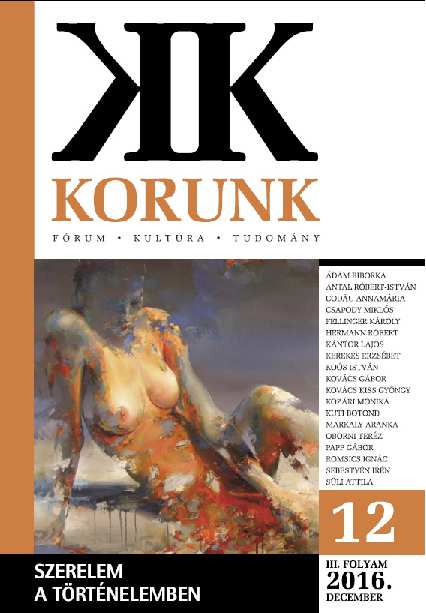
Imre Thököly is probably one of the most controversial individuals of Hungarian history, who is known not only as a military leader, but also as one of the largest landowners in the 17th century, as the leader of the outlaws, and an ally of the Turks. Despite the fact that after the death of his father he lost his Hungarian estates, he has managed to become one of the richest noblemen of the period at the end of the century. This was not only due to his excellent diplomatic and economic insights, since his marriage with the rich widow of Ferenc Rákóczi I, Ilona Zrínyi, also greatly contributed to the increase of his wealth. One of the most controversial issues of historiography is also linked to this fact. Did Imre Thököly and Ilona Zrínyi marry out of love on the 15th of June, 1682, or did they merely enter into a marriage of convenience? In this study, I would like to outline the elements of this issue, not to argue in favour of any position, just to highlight the complexity of the topic, providing some additional information and maybe shed new light on the relationship of these two people.
More...
The prince of Transylvania, Gábor Bethlen (1613-1629), and his first wife,Zsuzsanna Károlyi (1585-1622), have married in 1605. The two youngsters, both orphans, have been introduced by the prince of Transylvania, István Bocskai (1605-1606). The largest part of their correspondence dates from 1619-21, a period in which the prince has waged war against Ferdinand II (1619-1637), and thus had to be far away from the family home. His wife, Zsuzsanna, started feel ill during this period, and she died in Spring 1622. Their letters written to each other point to strong emotional ties between them, even though we cannot be certain that there was any authentic love between the partners. According to the author, the exchanged letters lead us to believe that Zsuzsanna, although she mostly did not deal with larger political issues, could arrange payments – on her own initiative, or at the request of her husband –, issue orders to the office-holders of the manors and castles, and could decide in manners concerned with the household and housekeeping. The sincere, intimate tone of the letters indicate strong emotional ties between the spouses.
More...
Archival documents as well as archaeological research undertaken during the last years bring news and remarkable data on the medieval urban agglomeration "Oraşul de Floci".Located at the mouth of the river Ialomitza in the Danube, the city confirms its existence of almost four centuries, period in which enjoys an intense economic life, trade frequent and implicitly of a great monetary circulation .The book brings together in this sense some information from the 17th century. Concerning the legal and administrative organization and also some of the occupations of the inhabitants of the city, as an attestation of the social structure of the city in question
More...
In this study, an almost unknown problem - the geographical, economic, social and demographic configuration of the vakif (Islamic pious foundation) created by Sultan Osman IL in 1621 was cleared up for the maintenance of the mosque and the mosque City of Isaccea.The book is based on unpublished documents found in the archives of Istanbul and Krakow; The most important piece is the official tax register, dated July 25, 1645, of the localities that make up this vakif.
More...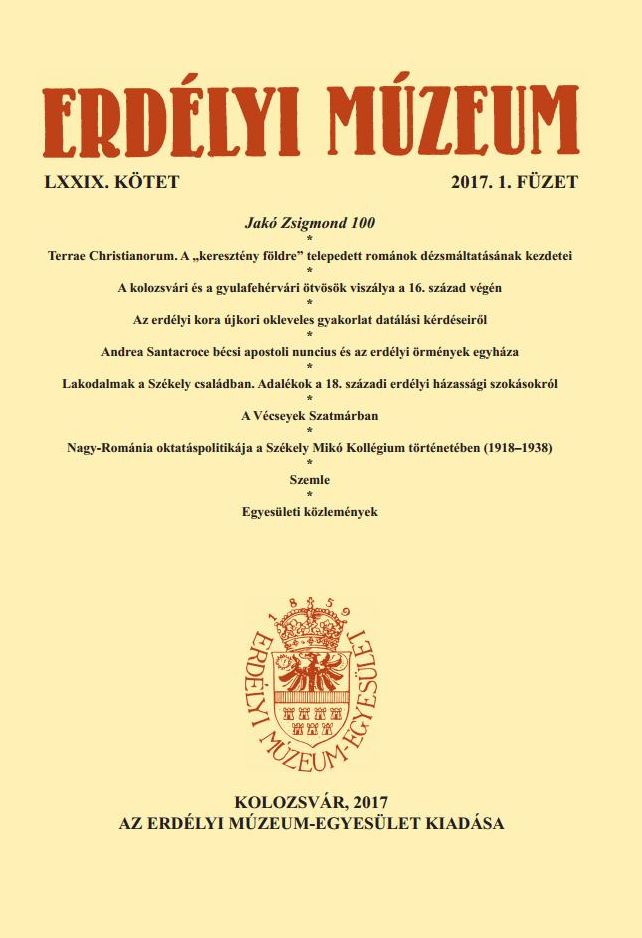
This article is dedicated to the less known chapter of the Armenians’ church-history in Transylvania at the end of the 17th century. Further on, this study explicitly deals with Andrea Santacroce’s (1656−1712), − Apostolic Nuncio in Vienna, Titular Archbishop of Seleucia in Isauria −, connection with Armenian community in Transylvania from a church-historical point of view. His ecclesiastical office in Vienna (1696−1700) essentially coincided with the case of apostasy broken out amongst the Armenians in Transylvania in 1697, which had nearly ruined their church-union concluded in 1689, in Lemberg, Poland. The reason of the conflict was focused upon the right interpretation of the church-union between Oxendio Virziresco (1654−1715), the Armenian Uniate Bishop, and Armenian community in Transylvania. Consequently, prior to his higher education at Urbanian College in Rome, the Armenian Uniate Bishop was faithful to pure Latinisation. In his point of view, the Uniate Armenians in Transylvania must have the same duties as the Roman Catholic believers. However, the Uniate Armenians was henceforward attached to old or ancient Armenian religious as well as liturgical costumes despite their church-union concluded in 1689. In their point of view, the church-union was confined to acknowledge the Roman Pope’s primacy and nothing else. This problem of interpreting caused tension within the Armenian community in Transylvania, which led to conflict and the case of apostasy in the late 1690’s. In this manner, this article aims at presenting and summarising the historical precedents and consequences of these events happened in Transylvania and, evidently, its relation to the ecclesiastical office of Nuncio Andrea Santacroce, resting upon the partly discovered and entirely undiscovered sources kept at archives in Hungary, Italy, and Vatican City.
More...